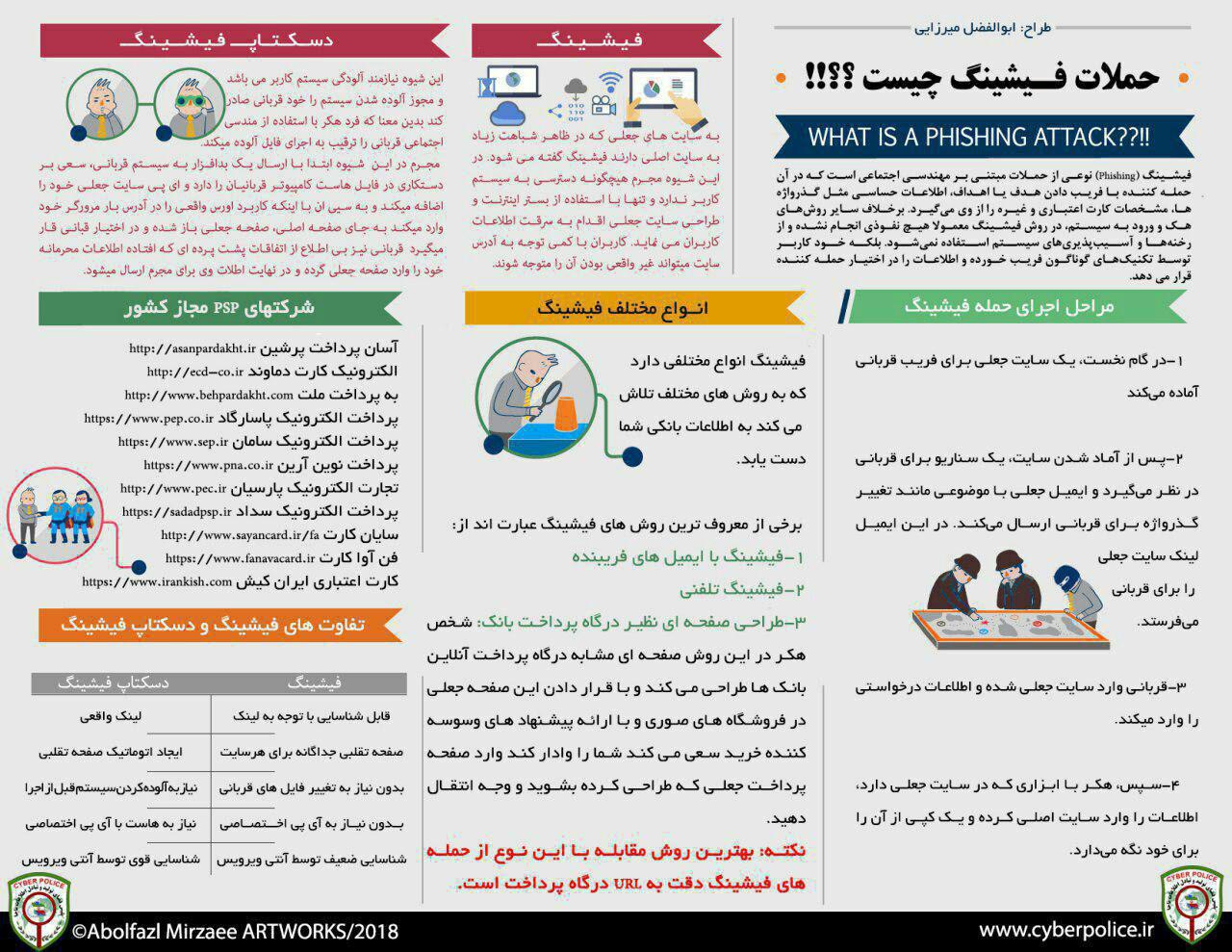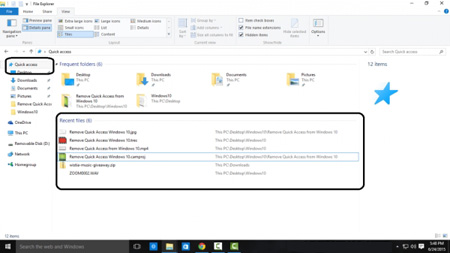
Microsoft DirectX مجموعه اي از رابط هاي برنامه کاربردي (application
programming interfaces (API است که براي اداره كردن وظايف مربوط به برنامه
هاي چند رسانه اي، به ويژه برنامه ريزي بازي و ويدئو، در پايگاه
مايکروسافت است. در اصل، اسم هاي اين " رابط هاي برنامه کاربردي" (APLs)
تماما با Direct شروع مي شوند، از قبيل Direct3D, DirectDraw، DirectMusic,
DirectPlay, DirectSound و به همين منوال. DirectX، بعد، اصطلاح کلي براي
تمام اين رابط هاي برنامه کاربردي Direct و چيزي شد، و آن اصطلح اسم کلي
اين مجموعه شد. بعد از معرفي Xbox، مايکرسافت رابط هاي برنامه کاربردي براي
طراحي بازي چند پايگاهي را از قبيل XInput، که براي مکمل کردن و يا
جايگزين کردن اجزا تکي DirectX طراحي شده اند منتشر کرد.
Direct3D ( گرافيک سه بعدي API در درون DirectX) به طور گسترده اي در گسترش بازي هاي کامپيوتري براي ويندوز مايکروسافت، Xbox مايکروسافت و Xbox 360 مايکروسافت استفاده مي شود. Direct3D نيز توسط ديگر نرم افزارهاي کاربردي براي وظايف گرافيکي و تصويري، بيشتر به طور قابل توجهي در ميان بخش مهندسي براي CAD/CAM ، به خاطر تواناي آن در درآوردن سريع گرافيک سه بعدي با استفاده از سخت افزازهاي گرافيکي سازگار با DirectX بکار ميروند. از آنجا که Direct3D به طور گسترده اي جزئي از DirectX به اطلاع عموم رسيده است، رايج است که ديده شود که نام هاي DirectX و Direct3D به جاي هم استفاده شوند.
جعبه طراحي نرم افزار DirectX از مجموعه هاي زمان اجرا به شکل دودويي قابل توزيع مجدد، به همراه اسناد و سرآمدهاي همراه براي استفاده در کدگذري تشکيل مي شود. در اساس، زمان هاي اجرا تنها توسط بازي ها و يا به طور واضحي توسط کاربر نصب مي شوند. ويندوز 95 با DirectX شروع به کار نکرد ولي DirectX در Windows 95 OEM Service Release 2 (انتشار شماره 2 شرکت توليد کننده تجهيزات اصلي و جانبي ويندوز 95) شامل شد. ويندوز 98 و ويندوز NT 4.0 هر دو با DirectX روانه بازار شدند، تا کنون تمام نسخه هاي ويندوزهاي منتشر شده اين را دارند. SDX به عنوان يک دانلود مجاني موجود است. در حالي که زمان هاي اجرا اختصاصي، نرم افزار نزديک به منبع، کد منبع هستند توسط بيشتر نمونه هاي SDX فراهم مي شوند.
آخرين نسخه هاي Direct3D به نام هاي Direct3D 10 و Direct3D 9Ex به استثتاي Windows Vista هستند. دلايلي که، همينجور که مايکروسافت ادعا مي کند، اين است که تغييرات گسترده اي در معماري گرافيک ويندوز و در معرفي معروف Windows Display Driver Model وجود دارند. منتقدين استدلال مي کنند که ممکن است انگيزه هاي تبليغاتي احتمالي همچنين وجود داشته باشد. بر خلاف دسترسي اختصاصي که توسط برنامه هاي کاربردي DirectX در ويندوز XP ارائه مي شود، اين طراحي مجدد زيربنا گرافيک براي ويندوز ويستا از سخت افزارهاي گرافيک مجازي سازي تا چندين برنامه کاربردي و خدمات منجمله Desktop Windows Manager پشتيباني مي کند. هم Direct3D 10 و هم Direct3D 9Ex بر شالوده و محرک هاي WDDM متکي هستند.
اجزاء تشکيل دهنده DirectX
DirectDraw : براي کشيدن تصاوير دو بعدي. بد دانسته مي شود، اگرچه هنوز در تعدادي از بازي ها مورد استفاده قرار مي گيرد.
(Direct3D (D3D : براي کشيدن تصاوير سه بعدي
DXGI : براي شمارش آداپتورها و نظارت و مديريت زنجيره هاي مبادله اي براي Direct3D 10 و بالاتر
DirectInput : براي ميانجي قرار دادن وسايل ورودي شامل صفحه کليدها، موس ها، دسته هاي بازي يا ديگر کنترل گرهاي بازي
DirectPlay : براي برقراري ارتباط بر يك شبكه محلي يا گسترده
DirectSound : براي پخش و ركورد كردن صداهاي موجي شكل
DirectSound3D : براي پخش صداهاي سه بعدي
DirectMusic : براي پخش آرم هاي برنامه ساخته شده در DirectMusic Producer
DirectX Media : شامل DirectAnimation براي فيلم هاي كارتوني (انيميشن) دو بعدي شبكه; DirectShow براي پخش صوت و تصوير و فيلم و صداي زنده بر روي مرورگر (streaming media)،
DirectX Transform براي برنامه هاي دو سويه شبکه (بين يک برنامه و يک کاربر) و Direct3D Retained Mode براي گرافيک هاي سه بعدي سطح بالاتر، DirectShow داراي DirectX plugins براي پردازش سيگنال صوتي ميباشد و DirectX Video Acceleration براي پخش ويدئو شتاب داده شده
DirectShow : از تاريخ آپريل 2005 ديگر DirectShow بخشي از رابط برنامه کاربردي DirectX نيست. اين همراه با پايگاه SDK موجود ميباشد.
SDK = Software Development Kit = برنامه اي که برنامه نويسان از آن براي ساخت پروژه هايشان استفاده مي کنند.
DirectX Media Objects : پشتيباني از چيزهاي جرياني مثل رمزگذارها، رمزگشاها و جلوه ها
DirectSetup : براي نصب اجزاء DirectX. نه براي رابط برنامه کاربردي يک بازي بخودي خود
DirectX 10
يک بروزرساني عمده براي رابط برنامه کاربردي DirectX 10، DirectX با و تنها با Windows Vista روانه بازار مي شود. نسخه هاي قبلي ويندوز قادر به اجراي برنامه هاي انحصاري DirectX 10 نيستند. تغييرات در DirectX 10 وسيع بودند.، ولي Direct3D مشخصه بارز يک تعمير کامل در اين API (رابط برنامه کاربردي) بود. از هنگامي که Windows Vista صدا را در نرم افزارها بر روي CPU ترجمه مي کند، DirectInput به نفع XInput بد دانسته شد، با DirectSound به نفع XACT مخالفت شد و پشتيباني سخت افزارهاي صوتي شتاب داده شده را از دست داد. DirectPlay DPLAY.DLL همچنين برداشته و با dplayx.dll جابجا شد; بازي هاي که بر اين فايل dll تکيه مي کنند بايد آن را تکثير و به dplay.dll تغيير نام دهند.
تاريخچه
در اواخر 1994 مايكروسافت درست در شرف انتشار سيستم عامل بعدي اش بود، Windows 95. عامل اصلي که ارزشي را که مصرف کنندگان بر روي سيستم عامل جديد خواهد گذاشت مشخص مي کرد بر روي چه برنامه هاي که قادر به اجرا در آن خواهند بود بسيار زياد باقي ماند. سه نفر از کارمندان مايکروسافت ـ Craig Eisler, Alex St. John و Eric Engstrom - نگران بودند، چون برنامه ريزان متمايل بودند تا سيستم عامل قبلي مايکروسافت، MS-DOS ، را به عنوان يک پايگاه بهتر براي برنامه ريزي بازي ببينند، به اين معنا که معدود بازي هايي مي توانند براي Windows 95 گسترش و طراحي و اين سيستم عامل با آن اندازه يک کار موفقيت آميز نخواهد بود.
DOS اجازه دسترسي مستقيم به كارت هاي ويدئو، صفحه کليدها، موس ها، وسايل صدا و تمام ديگر قسمت هاي سيستم را ميداد، در حالي که Windows 95، با نمونه حافظه حفاظت شده اش، با کار کردن بر روي يک نمونه بسيار بيشتر استاندارد شده، دستيابي به تمام اينها را محدود مي کرد. مايکروسافت نياز به راهي داشت که به برنامه ها اجازه مي داد تا آنچه را که نياز دارند بدست آورند، و سريعا به آن نياز داشتند; اين سيستم عامل تنها چند ماه با انتشار فاصله داشت. Eisler, St. John, و Engstrom با يکديگر کار کردند تا اين مشکل را درست کنند، به همراه راه حلي که آنها آن را در پايان DirectX ناميدند.
اولين نسخه انتشار يافته DirectX به عنوان Windows Games SDK در سپتامبر سال 1995 روانه بازار شد. آن جايگزين Win32 براي DCI (Display Control Interface ) و WinG براي Windows 3.1 بود. يك گروه طراحي در ATI فن آوري پايه اي گرافيك بازي را مورد توجه مايكروسافت ساخت. گسترش DirectX توسط گروه Eisler ( خط اول طراحي)، St. John و Engstrom (مدير برنامه) رهبري شد. مقدم بر وجود DirectX، مايکروسافت OpenGL را از قبل در پايگاه Windows NT شامل کرده بودند. در آن هنگام، OpenGL نياز به گرانترين سخت افزارها داشت و محدود به استفاده هاي طراخي و ساخت و CAC ميشد. Direct3D ( معرفي شده توسط Eisler, Engstrom و St. John به عنوان شق ديگري براي SGI هاي OpenGL) در نظر گرفته شده بود تا يک يار سبک وزن OpenGL يواش آن وقت براي استفاده در بازي باشد. همانجور که قدرت کارت هاي گرافيکي کامپيوترهايي که در حال کار بودند رشد مي کردند، OpenGL استاندارد غير رسمي و مسير اصلي محصول شد. در آن نقطه يک جنگ بين پشتيبانان OpenGL و Windows-only Direct3D دو-پايگاهي شروع شد که خيلي ها انتقاد داشتند يک نمونه ديگر از قبضه، توسعه و نابود کردن تاکتيک دادوستدد مايکروسافت بود. با وجود اين، ديگر API (رابط برنامه کاربردي ِ) DirectX همواره با OpenGL در بازي هاي کامپيوتري ترکيب مي شوند چون OpenGL تمام کارکردهاي DirectX را شامل نمي شود( ار قبيل دسته بازي يا صدا). گرچه آميزش OpenGL و SDL براي اين مقصود به صورت روزافزوني رو به محبوب شدن است.
این مقاله توسط سایت avaxnet.com ترجمه شده است.
استفاده تنها با ذكر منبع "avaxnet.com" مجاز ميباشد.
استفاده تنها با ذكر منبع "avaxnet.com" مجاز ميباشد.
* * * * * * * * * * * * * * * * * * * * *
What is DirectX ?
Microsoft DirectX is a collection of application programming interfaces (APIs) for handling tasks related to multimedia, especially game programming and video, on Microsoft platforms. Originally, the names of these APIs all began with Direct, such as Direct3D, DirectDraw, DirectMusic, DirectPlay, DirectSound, and so forth. DirectX, then, was the generic term for all of these Direct-something APIs, and that term became the name of the collection. After the introduction of the Xbox, Microsoft has also released multiplatform game development APIs such as XInput, which are designed to supplement or replace individual DirectX components.
Direct3D (the 3D graphics API within DirectX) is widely used in the development of computer games for Microsoft Windows, Microsoft Xbox, and Microsoft Xbox 360. Direct3D is also used by other software applications for visualization and graphics tasks, most notably among the engineering sector for CAD/CAM, because of its ability to quickly render high-quality 3D graphics using DirectX-compatible graphics hardware. As Direct3D is the most widely publicized component of DirectX, it is common to see the names "DirectX" and "Direct3D" used interchangeably.
The DirectX software development kit consists of runtime libraries in redistributable binary form, along with accompanying documentation and headers for use in coding. Originally, the runtimes were only installed by games or explicitly by the user. Windows 95 did not launch with DirectX, but DirectX was included with Windows 95 OEM Service Release 2.[1] Windows 98 and Windows NT 4.0 both shipped with DirectX, as has every version of Windows released since. The SDK is available as a free download. While the runtimes are proprietary, closed-source software, source code is provided for most of the SDK samples.
The latest versions of Direct3D, namely, Direct3D 10 and Direct3D 9Ex, are exclusive to Windows Vista. The reasons, as Microsoft claims, is that there were extensive changes in the Windows graphics architecture, and in particular the introduction of the Windows Display Driver Model. Critics argue that there may be possible commercial motives as well. This redesign of the graphics infrastructure for Windows Vista supports virtualizing graphics hardware to multiple applications and services such as the Desktop Window Manager, in contrast to the exclusive access afforded to DirectX applications on Windows XP. Both Direct3D 9Ex and Direct3D 10 rely on the WDDM infrastructure and WDDM drivers.
The components comprising DirectX are :
DirectX Graphics, which consists of several APIs:
*DirectDraw: for drawing 2D Graphics (raster graphics). Now deprecated, though still in use by a number of games.
*Direct3D (D3D): for drawing 3D graphics.
*DXGI: for enumerating adapters and monitors and managing swap chains for Direct3D 10 and up.
*DirectInput: for interfacing with input devices including keyboards, mice, joysticks, or other game controllers. Deprecated after version 8 in favor of XInput for Xbox360 controllers or standard WM INPUT window message processing for keyboard and mouse input.
*DirectPlay: for communication over a local-area or wide-area network. Deprecated after version 8.
*DirectSound: for the playback and recording of waveform sounds.
*DirectSound3D (DS3D): for the playback of 3D sounds.
*DirectMusic: for playback of soundtracks authored in DirectMusic Producer.
*DirectX Media: comprising DirectAnimation for 2D web animation, DirectShow for multimedia playback and streaming media, DirectX Transform for web interactivity, and Direct3D Retained Mode for higher level 3D graphics. DirectShow contains DirectX plugins for audio signal processing and DirectX Video Acceleration for accelerated video playback.
As of April 2005 DirectShow is no longer a part of the DirectX API. It now comes bundled along with the Platform SDK.
** DirectX Media Objects: support for streaming objects such as encoders, decoders, and effects.
** DirectSetup: for the installation of DirectX components. Not a game API per se.
DirectX functionality is provided in the form of COM-style objects and interfaces. Additionally, while not DirectX components themselves, managed objects have been built on top of some parts of DirectX, such as managed Direct3D 9 [2]and the XNA graphics library[3].
DirectX 10
A major update to DirectX API, DirectX 10 ships with and is only available with Windows Vista; previous versions of Windows are not able to run DirectX 10-exclusive applications. Changes for DirectX 10 were extensive, but only Direct3D featured a major overhaul of the API.
Many former parts of DirectX API were deprecated in the latest DirectX SDK and will be preserved for compatibility only: DirectInput was deprecated in favor of XInput, DirectSound was deprecated in favor of XACT and lost support for hardware accelerated audio, since Vista audio stack renders sound in software on the CPU. The DirectPlay DPLAY.DLL was also removed and was replaced with dplayx.dll; games that rely on this DLL must duplicate it and rename it to dplay.dll.
History
In late 1994 Microsoft was just on the verge of releasing its next operating system, Windows 95. The main factor that would determine the value consumers would place on their new operating system very much rested on what programs would be able to run on it. Three Microsoft employees — Craig Eisler, Alex St. John, and Eric Engstrom — were concerned, because programmers tended to see Microsoft's previous operating system, MS-DOS, as a better platform for game programming, meaning few games would be developed for Windows 95 and the operating system would not be as much of a success.
DOS allowed direct access to video cards, keyboards and mice, sound devices, and all other parts of the system, while Windows 95, with its protected memory model, restricted access to all of these, working on a much more standardized model. Microsoft needed a way that would let programmers get what they wanted, and they needed it quickly; the operating system was only months away from being released. Eisler, St. John, and Engstrom worked together to fix this problem, with a solution that they eventually named DirectX.
The first version of DirectX released was shipped September of 1995 as the Windows Games SDK. It was the Win32 replacement for the DCI and WinG APIs for Windows 3.1. A development team at ATI brought fundamental game graphics technology to the attention of Microsoft. The development of DirectX was led by the team of Eisler (development lead), St. John, and Engstrom (program manager). Simply put, it allowed all versions of Microsoft Windows, starting with Windows 95, to incorporate high-performance multimedia. Eisler wrote about the frenzy to build DirectX 1 through 5 in his blog.
Prior to DirectX's existence, Microsoft had already included OpenGL on their Windows NT platform. At the time, OpenGL required "high-end" hardware and was limited to engineering and CAD uses. Direct3D (introduced by Eisler, Engstrom, and St. John as an alternative to SGI's OpenGL) was intended to be a lightweight partner to the then-slower OpenGL for game use. As the power of graphics cards and the computers running them grew, OpenGL became the de-facto standard and a mainstream product. At that point a "battle" began between supporters of the cross-platform OpenGL and the Windows-only Direct3D, which many argued was another example of Microsoft's embrace, extend and extinguish business tactic (see Fahrenheit or Direct3D vs. OpenGL). Nevertheless, the other APIs of DirectX are often combined with OpenGL in computer games because OpenGL does not include all of DirectX's functionality (such as sound or joystick support). However, the combination of OpenGL and SDL for this purpose is becoming increasingly popular.
All Rights Reserved By Avaxnet.Com


 تبلیغات محیطی چیست و چه تأثیری بر کسب و کار شما دارد؟
تبلیغات محیطی چیست و چه تأثیری بر کسب و کار شما دارد؟  پردازش درونحافظهای: راهکاری برای سامانههای هوشمند آینده
پردازش درونحافظهای: راهکاری برای سامانههای هوشمند آینده  7 راز موفقیت یک مهندس نرمافزار
7 راز موفقیت یک مهندس نرمافزار  با غیرفعال کردن Service Host: Local System در ویندوز 10 منابع سیستمی را آزاد کنید
با غیرفعال کردن Service Host: Local System در ویندوز 10 منابع سیستمی را آزاد کنید  حملات فیشینگ چیست؟
حملات فیشینگ چیست؟ 


 دانلود اپلیکیشن اندروید AdForest – اپلیکیشن آگهی برای آندروید
دانلود اپلیکیشن اندروید AdForest – اپلیکیشن آگهی برای آندروید راههای خرید امن اینترنتی اعلام شد
راههای خرید امن اینترنتی اعلام شد ۱۴توصیه پلیس فتا برای خریدهای آنلاین
۱۴توصیه پلیس فتا برای خریدهای آنلاین  به نظر شما بدترین شبکه اجتماعی که بر سلامت روان اثر می گذارد ، کدامست؟
به نظر شما بدترین شبکه اجتماعی که بر سلامت روان اثر می گذارد ، کدامست؟ ZTE رسماً بازگشته و در IFA 2018 با گوشی Axon 9 ظاهر می شود
ZTE رسماً بازگشته و در IFA 2018 با گوشی Axon 9 ظاهر می شود  جلوگیری از نمایش فایل و پوشه های باز شده در QUICK ACCESS
جلوگیری از نمایش فایل و پوشه های باز شده در QUICK ACCESS جدول فرستندههای سوم دیجیتال در استانها
جدول فرستندههای سوم دیجیتال در استانها سونی در «بزرگترین تک شوی اروپا» با سه گوشی زد5 و عرضه اولین گوشی 4K جهان
سونی در «بزرگترین تک شوی اروپا» با سه گوشی زد5 و عرضه اولین گوشی 4K جهان
